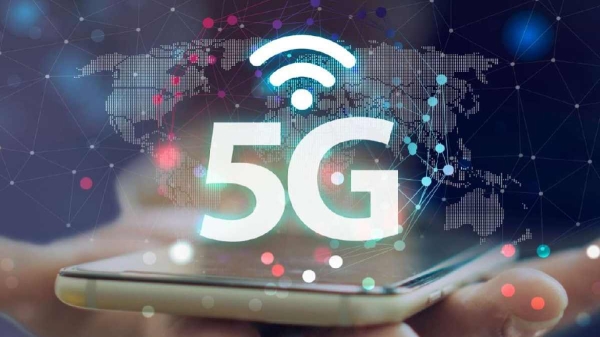5G can boost up to 2% of India GDP by 2030: NASSCOM
5G networks are expected to boost up to 2% of India's GDP, reaching 180 billion dollars by 2030 thanks to increased market penetration, boosting the economy and
- by B2B Desk 2022-11-18 06:38:58
5G networks are expected to boost up to 2% of India's GDP, reaching 180 billion dollars by 2030 thanks to increased market penetration, boosting the economy and sectoral reforms, according to a report by the National Association of Software and Services Companies (NASSCOM) and Arthur D. Little.
5G networks are expected to boost up to 2% of India's GDP, reaching 180 billion dollars by 2030 thanks to increased market penetration, boosting the economy and sectoral reforms, according to a report by the National Association of Software and Services Companies (NASSCOM) and Arthur D. Little.
With over 500 million 5G users in India by 2030, 5G technology can be a true transformation of the economy. With public and private 5G networks enabling use cases across multiple sectors including mobility, healthcare, manufacturing, retail, energy, and utilities, 5G networks can have an impact of more than 180 billion dollars on the economy of the nation. India by 2030”, Parnik Chitran Maitra, Managing Partner, said Arthur D. Little India and South Asia in a study titled - 5G - Revealing the era of digital convergence in India.
India currently has the second largest number of telecommunication users in the world, with 1.1 billion users, of which 740 million are 4G customers. However, with the rollout of 5G in the country, the change is expected to provide a quick upgrade to the customer experience.

This will help accelerate ARPU (average revenue per user) growth in the coming years, according to the report. The report forecasts that ARPU for Telecom will reach Rs. 335 by 2025.
Rising smartphone penetration, skyrocketing OTT consumption, digital payments and e-commerce are some of the key factors driving digitization, which is already helping boost ARPU.
The report added that policies like the National Fiber Optic Network (NOFN), now called BharatNet, which plans to connect all 2.5 lakh gram panchayats in the country, will help boost India's potential. in 5G adoption by increasing accessibility and affordability.
5G technology is expected to create new value through superior connectivity and become a catalyst for digital transformation in all industries. Sectors such as healthcare, energy, utilities, manufacturing, and retail are expected to benefit most from the widespread adoption of 5G networks.
Enterprise adoption, individual consumer adoption, and use of case development will all be key factors in the success of 5G. 5G is expected to be a major enabler for the country's economic drivers who require fast and reliable internet connectivity.
Cases such as efficient use of resources, data-driven farming in agriculture; Real-time detection of electronic attacks, intelligent deployment of unmanned defense vehicles; predictive fleet management, route planning and monitoring in logistics; Robotic healthcare surgeries with cloud-based patient profiles require a seamless internet connection for efficient performance, which can be done via 5G.
“For India, 5G provides an opportunity for industries to increase the pace of digitization at the grassroots level and for consumers to gain from economies of scale,” said Debjani Ghosh, President of Nasscom.
However, he added that achieving this will require effective ecosystem collaboration between telecom operators, OEMs (original equipment manufacturers), infrastructure companies and government to increase consumer adoption and market readiness to unlock the widespread benefits of 5G networks.
Globally, by 2025, the number of 5G connections is expected to exceed 4 billion, representing 35% of all connections. 5G mobile subscriptions are expected to grow at a CAGR of more than 50% worldwide.
Also Read: How 5G can become a game changer for E-commerce industry | B2B

POPULAR POSTS
Loan EMIs to Drop as RBI Slashes Repo Rate - Full MPC December 2025 Highlights
by Shan, 2025-12-05 11:49:44
Zoho Mail vs Gmail (2025): Which Email Platform Is Best for Businesses, Startups, and Students?
by Shan, 2025-10-09 12:17:26
PM Modi Launches GST Bachat Utsav: Lower Taxes, More Savings for Every Indian Household
by Shan, 2025-09-24 12:20:59
$100K H-1B Visa Fee Explained: Trump’s New Rule, Clarifications & Impact on Indian Tech Workers
by Shan, 2025-09-22 10:11:03
India-US Trade Deal Soon? Chief US Negotiator Arrives in Delhi as Talks Set to Begin Tomorrow
by Shan, 2025-09-15 11:54:28
Modi Meets Xi: Trump’s Tariffs, Strategic Autonomy, and the Future of Asia’s Power Balance
by Shan, 2025-09-03 06:40:06
Google Claims Gemini AI Uses Just ‘Five Drops of Water’ Per Prompt, Sparks Debate
by Shan, 2025-08-22 12:34:27
RECENTLY PUBLISHED

Pine Labs IPO 2025: Listing Date, Grey Market Premium, and Expert Outlook
- by Shan, 2025-11-05 09:57:07

The Agentic Revolution: Why Salesforce Is Betting Its Future on AI Agents
- by Shan, 2025-11-05 10:29:23

Top 10 Insurance Companies in India 2026: Life, Health, and General Insurance Leaders Explained
- by Shan, 2025-10-30 10:06:42

OpenAI Offers ChatGPT Go Free in India: What’s Behind This Big AI Giveaway?
- by Shan, 2025-10-28 12:19:11

Best Silver Investment Platforms for 2025: From CFDs to Digital Vaults Explained
- by Shan, 2025-10-23 12:22:46





 Subscribe now
Subscribe now 